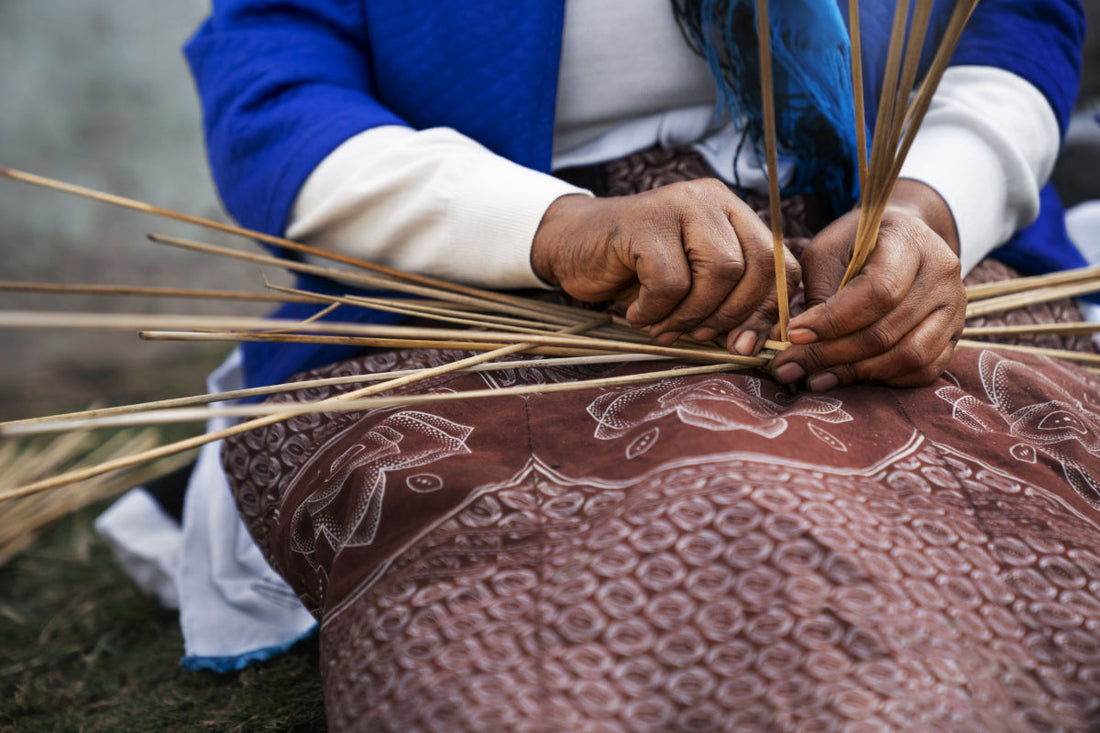
Explore authentic Peruvian crafts: types and buying tips
Share
Did you know that many of the handmade pieces we admire today date back centuries? Peruvian craftsmanship is not only an expression of creativity, but also a living reflection of our country's cultural diversity. In this article, we'll tell you how it came to be, what makes it unique, what types of Peruvian crafts exist, and how to choose the most authentic ones with confidence and pride.
Origin of Peruvian crafts
Peruvian craftsmanship has pre-Hispanic roots. Long before the arrival of the Spanish, indigenous cultures developed skills in working with ceramics, textiles, metals, and stone and wood carvings. These pieces were not only utilitarian; they also held profound spiritual, ceremonial, and social significance .
During the colonial era, native techniques blended with European styles, giving rise to new artistic expressions. Over time, each region of the country preserved and adapted its traditions, making Peruvian craftsmanship a symbol of identity today.
What makes Peruvian craftsmanship unique?
The authenticity of Peruvian handicrafts lies in their connection to the land, to the people, and to their stories. These creations combine ancestral techniques with a contemporary sensibility, crafted primarily by communities that pass down their knowledge from generation to generation.
What distinguishes the handicrafts of the Andean region , the highlands , and the coastal region of Peru is not only the materials, but the worldview captured in each object. Furthermore, many of these pieces are made in communities that see crafts not only as a tradition, but also as a source of development and empowerment.
Types of Peruvian crafts according to their origin
The variety of handicrafts in Peru is immense. Below, we review some of the most representative:
Ayacucho altarpieces
These small wooden boxes decorated with religious or traditional scenes are icons of Peruvian crafts . Their origin dates back to the syncretism between Catholicism and Andean beliefs.

Andean and Amazonian textiles
Andean textiles are notable for their colors, symbols, and loom weaving techniques. In the Amazon, natural fibers and plant dyes are used to create garments, bags, and ornaments.

Traditional ceramics
Found in almost every region, traditional pottery can be utilitarian or decorative. It is often decorated with ancestral motifs or scenes from everyday life.
Engraved gourds
They are typical of the craftsmanship of the Peruvian coastal region , especially Junín and Lima. Each piece tells a story, from rural scenes to symbolic messages.
Jewelry and goldsmithing
Inspired by Mochica, Inca, and colonial heritage, these crafts include pieces of silver, copper, and other metals, with hand-finished and fine details that reflect a work of art.
Main artisanal regions of Peru
Ayacucho
Famous for the Ayacucho altarpieces , ceramics, and stone carving from Huamanga . It is one of the regions with the greatest artisanal production in the country.
Cusco
It preserves Andean textile techniques and craftsmanship with great skill. Its crafts reflect the Inca worldview and their historical legacy.
Fist
Her colorful embroidery and alpaca weaving are highly recognized, and she is also known for her traditional dance masks.
Amazon
In the Peruvian jungle, communities craft basketry, pottery, natural fiber textiles, and seed jewelry. Respect for nature permeates every piece.
Lime
Although it is an urban city, it also concentrates a large number of craft workshops that bring together styles from all over the country, including engraved mates .
How Peruvian craftsmanship has evolved to this day
Today, Peruvian craftsmanship has found new opportunities for development. Tourism, contemporary design, and digital platforms have allowed artisans to reach new audiences without losing their essence.
Furthermore, many brands work with an ethical approach, promoting fair practices, sustainable use of materials, and the empowerment of women artisans. The fusion of tradition and modernity has opened doors for craftsmanship to continue growing and adapting to current times.
5 essential tips for buying Peruvian crafts
-
Learn about the origin of the piece:
Make sure it comes from a recognized community or workshop. Many organizations promote the purchase of ethical and responsible Peruvian handicrafts. -
Prefers handmade products:
Look for signs that the piece was handcrafted. Imperfections are part of its value. -
Ask about the materials and techniques used:
Knowing whether native cotton, natural dyes, or techniques such as engraving or weaving were used is key to assessing what you are purchasing. -
Value the craftsmanship:
Remember that behind every object there are hours of work and a story. Don't haggle excessively over the price. -
Support brands that respect artisans:
Opt for projects that highlight and fairly compensate those who make Peruvian craftsmanship available to more people.
Exploring Peruvian craftsmanship opens a door to the past, to the work of generations who have preserved their culture through their hands. Every textile, every ceramic, and every altarpiece tells a story that deserves to be recognized and shared.
Supporting artisans isn't just a way to decorate your home or find a great gift; it's a way to contribute to the preservation of ancestral knowledge and the development of communities that continue to create with passion.
If you would like to learn more about authentic Peruvian pieces, we invite you to explore our online store. umaperu.com , where every detail reflects the artistry, dedication, and legacy of our artisans. Because choosing handmade products also means choosing history, connection, and purpose.
